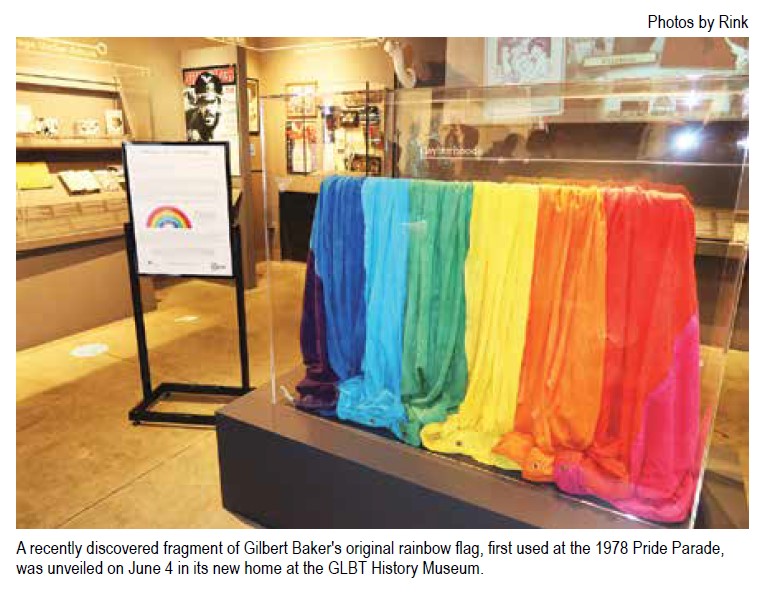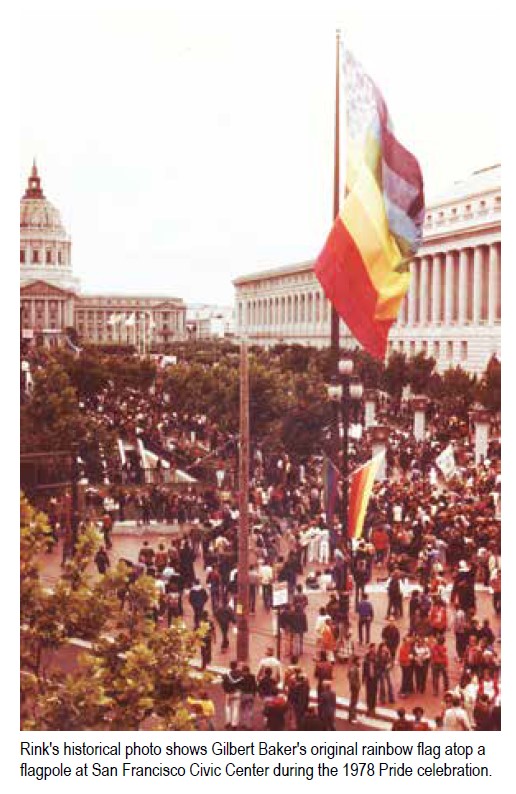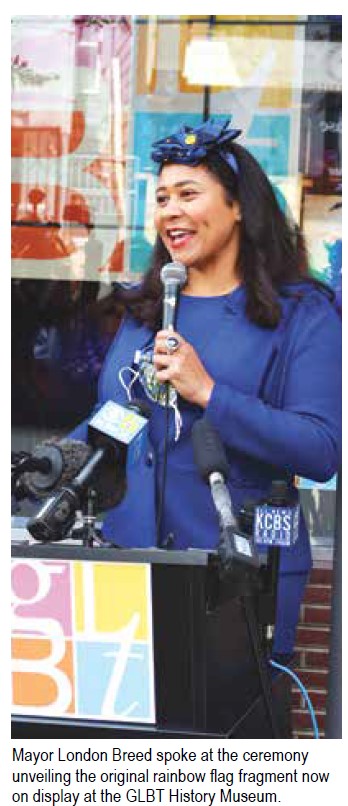On June 4, The GLBT Historical Society Museum and Archives in San Francisco unveiled a historic artifact, thought to be lost forever. It is a fragment of one of the two original Rainbow Flags from 1978, recently discovered. Envisioned by Gilbert Baker (1951–2017), it measures 10 feet by 28 feet.

The San Francisco Bay Times first published in 1978, and Baker was often featured in its pages. For Pink Triangle project creator Patrick Carney, he did his last major interview, which was an exclusive for the Bay Times.
Back in ’78, Baker designed and created the first LGBTQ Rainbow Flag and companion flags with the help of Lynn Segerblom, James McNamara, and more than 30 volunteers. The flags flew proudly during the 1978 San Francisco Gay Freedom Day celebrations at United Nations Plaza.

In June of 1979, Baker planned to retrieve the original flags from storage at the San Francisco Gay Community Center. He discovered that the flags, stored under a leaky roof, were badly mildewed. Baker managed to salvage a portion of one of the original eight-color flags. This fragment remained in his possession, secretly, for decades. When Baker died unexpectedly in 2017, this original flag piece was among boxed possessions that were given to his sister Ardonna Cook.
Two years later, the Gilbert Baker Foundation was looking for a large flag to carry in the June 2019 Stonewall 50 Pride Parade in New York City. Foundation President Charles Beal asked Cook if she could loan a large flag from Baker’s belongings. She mailed the Foundation the 1978 flag fragment, not knowing its provenance.

The Foundation carried the fragment proudly in the Stonewall 50 parade, also oblivious to its identity. After the parade, the flag fragment was folded up and stored in Beal’s Greenwich Village Manhattan home. It was a chance phone call from a stranger that alerted Beal to the amazing backstory to this ragged piece of cloth.
In late August of 2019, Beal was contacted by James Ferrigan, a world-renowned flag expert who had worked with Baker in the late seventies at the Paramount Flag Company in San Francisco. During a lively conversation, Ferrigan mentioned the fragment of the original 1978 flag, asking where it now resides. The last time he had seen it was in Baker’s San Francisco apartment in the early eighties.
When Ferrigan described the flag, Beal suddenly realized this artifact was gathering dust in his closet. Beal began playing detective. He reached out to people who worked with Baker in 1978 and learned from two different sources, including veteran activist Lee Mentley, about the damaged flags in the community center.
The next task for Beal was to authenticate the fragment. He traveled in February of 2020 to San Francisco, where he was scheduled to join a panel discussion about the Rainbow Flag with Ferrigan at the GLBT Historical Society Museum. Beal brought the fragment with him.
Prior to the event, he invited Ferrigan to his hotel to inspect the piece. The veteran vexillologist identified the stitching and grommets done by Paramount. He declared without doubt that the Foundation was in possession of the original 1978 LGBTQ+ Rainbow Flag and prepared an official vexillological report confirming the provenance of the fragment.
This historic artifact has been added to the Gilbert Baker Collection that resides at the GLBT Historical Society Museum and Archives in San Francisco. It is the centerpiece of the exhibition entitled “Performance, Protest and Politics: The Art of Baker Baker.”
Published on June 10, 2021
Recent Comments